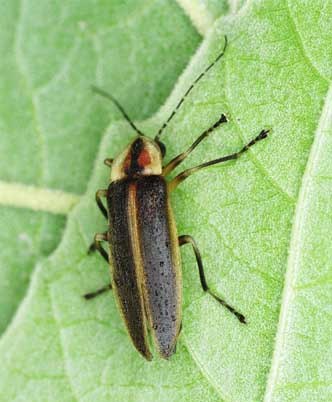|
Firefly
View more pictures: Bing Images Google Images Yahoo Images Common names: Firefly Scientific name (Family): Lampyridae Region: Throughout North America and Europe Life cycle: Two years - hibernating as larvae in chambers made of soil, on or under the surface, and pupate in cells made in the soil. Physical Description: Fireflies are mainly known for their flashing at night, that may be brought about by an enzyme, lucifease, and reacting with a substance called luciferin. Not all Fireflies are luminous, but they all have soft elytra and broad pronota. The Fireflies seen flying at night are males. The female of most species fly very little or not at all (wingless females are called Glowworms) and remain in vegetation while flashing. The length is .2 to .75 inches. The larvae are flattened, spindle-shaped, with ten body segments in the abdomen. The small head has large curved mandibles and noticeable antennae Feeding characteristics: Most species are nocturnal Both the adults and larvae are predaceous, feeding mostly on Slugs and Snails. They inject a highly toxic digestive substance into their prey that paralyzes them quickly. Once the prey is paralyzed, Lampyridae sucks the liquefied body contents. The larvae of some aquatic Asiatic species feed on snails that carry organisms that cause disease in humans. More needs to be done to make this insect available commercially. Return from Firefly to Insects E-H Encyclopedia of Garden Insects |
